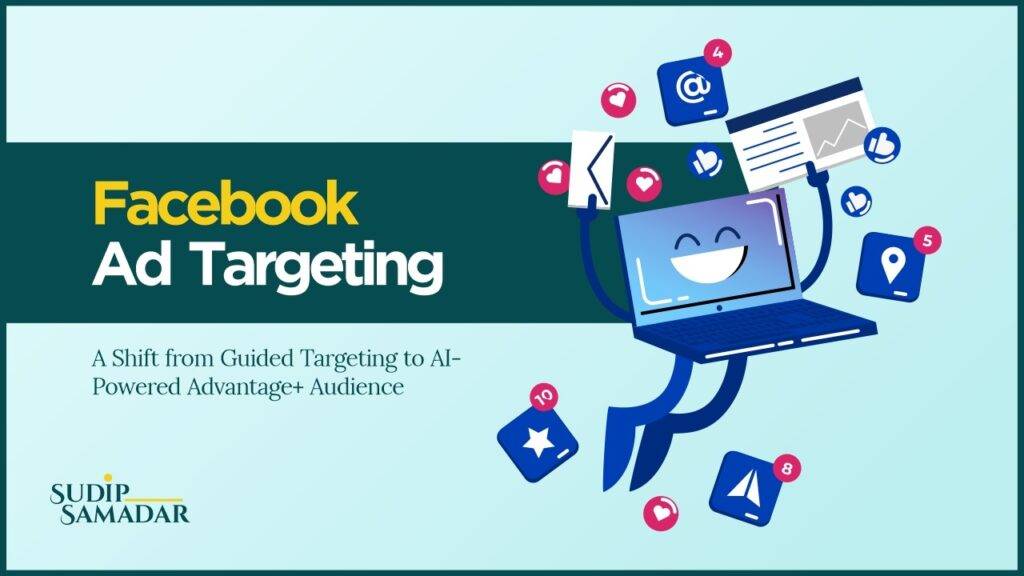
When it comes to running Facebook ads, there are two dominant schools of thought about audience targeting. Both approaches have their advocates, but the way we look at targeting has fundamentally changed over the years. In this article, I’ll share my journey, insights, and the shift I’ve made to embrace the power of AI-driven Advantage+ Audience.
The Traditional School of Thought: Guided Targeting
The first approach is deeply rooted in providing Facebook’s Pixel with clear guidance. According to this school of thought, you should input detailed interests, behaviors, and other audience signals so the Pixel knows exactly where to optimize.
This method assumes that going completely broad introduces bias and inefficiencies. The argument is simple: if you leave Facebook to find your audience without any signals, it can result in wasted ad spend. Therefore, guiding the Pixel through detailed targeting ensures it works in the right direction—efficiently and cost-effectively.
For years, this was considered the best practice. It allowed advertisers to have control and avoided the pitfalls of over-expanding audiences.
The Modern Approach: The Power of AI Targeting
On the other side, there’s a newer school of thought that embraces Facebook’s AI-powered Advantage+ Audience. This is where I currently stand. Advantage+ Audience is an advanced level of AI targeting, similar to how purchase-based optimization works in driving conversions.
For someone like me, who comes from a background of hyper-targeting, this shift took time. I’ve been a strong advocate for Single Keyword Ad Groups (SKAGs) in Google Ads—an extremely focused and precise approach. However, over the years, I’ve observed a clear trend: AI can outperform manual targeting when optimized for the right outcomes.
From Skeptic to Believer: My Journey
If you had asked me a year ago, I would have rejected any form of broad targeting or audience expansion products. Like many advertisers, I believed in strict control, precise inputs, and manual refinement.
But as the advertising landscape evolved, so did my approach. I ran repeated experiments and found that Advantage+ Audience can deliver exceptional results—but only for specific campaign goals.
Where Advantage+ Audience Shines
Advantage+ Audience works incredibly well for campaigns focused on conversions. If you’re running campaigns to drive purchases or high-quality traffic to your website, AI-based targeting can be a game-changer.
Here’s why: when you optimize for a high-quality action like a completed purchase, the algorithm understands the signal. A purchase, for example, happens only when the transaction is complete and verified. This clarity allows Facebook’s AI to focus on delivering results at a lower cost while maintaining quality.
Where It Falls Short
However, not all campaigns benefit from Advantage+ Audience. In my experience, it does not perform well for objectives like link clicks or landing page views. Here’s the problem: while the AI might deliver cheap actions, these actions are often low quality.
The algorithm’s job is to optimize for the defined action, but if that action doesn’t have a clear, measurable quality signal—like a purchase—it can result in meaningless clicks.
For example, I’ve repeatedly tested Advantage+ Audience for link-click campaigns, and it has never passed my benchmarks. This isn’t just my experience; I’ve seen the same pattern in the backend data of friends’ and clients’ campaigns.
Advantage+ Audience Is Not the Same as Going Broad
A common misconception is that Advantage+ Audience is the same as going completely broad. That’s not true.
When you “go broad,” you remove all interests, behaviors, and custom inputs, leaving the algorithm with no direction. Advantage+ Audience, on the other hand, uses AI to expand targeting intelligently based on your campaign goals and historical performance.
I’ve run parallel campaigns—one with broad targeting and the other with Advantage+ Audience—and the results are distinct. The AI-driven approach consistently outperforms broad targeting because it uses historical data to make smarter decisions.
The Future of Meta Advertising: Trusting the AI
The direction in which Meta (Facebook) is moving is clear: less transparency, more reliance on algorithms. Google Ads is following the same path with products like Performance Max, which further validates this trend.
Meta’s algorithms are becoming incredibly sophisticated. They already know:
- Who has converted on your website.
- Who engages with your ads and content.
- Even when your historical data isn’t strong, the algorithm adapts.
We are heading toward a future where advertisers will provide minimal inputs, and the algorithm will handle the rest. While this might sound unsettling for those accustomed to manual targeting, the truth is that AI already knows your audience better than you do.
Embracing the Change
The advertising world is evolving, and as advertisers, we need to adapt. Advantage+ Audience represents the next step in AI-driven advertising. While it may not work for every campaign objective, it’s clear that for conversion-focused goals, the results are hard to ignore.
If you’re hesitant about this shift, I encourage you to experiment. Test Advantage+ Audience alongside traditional targeting methods. You might be surprised at how well the AI can deliver results when optimized for the right actions.
The future is here, and it’s powered by AI. It’s time to embrace it.
